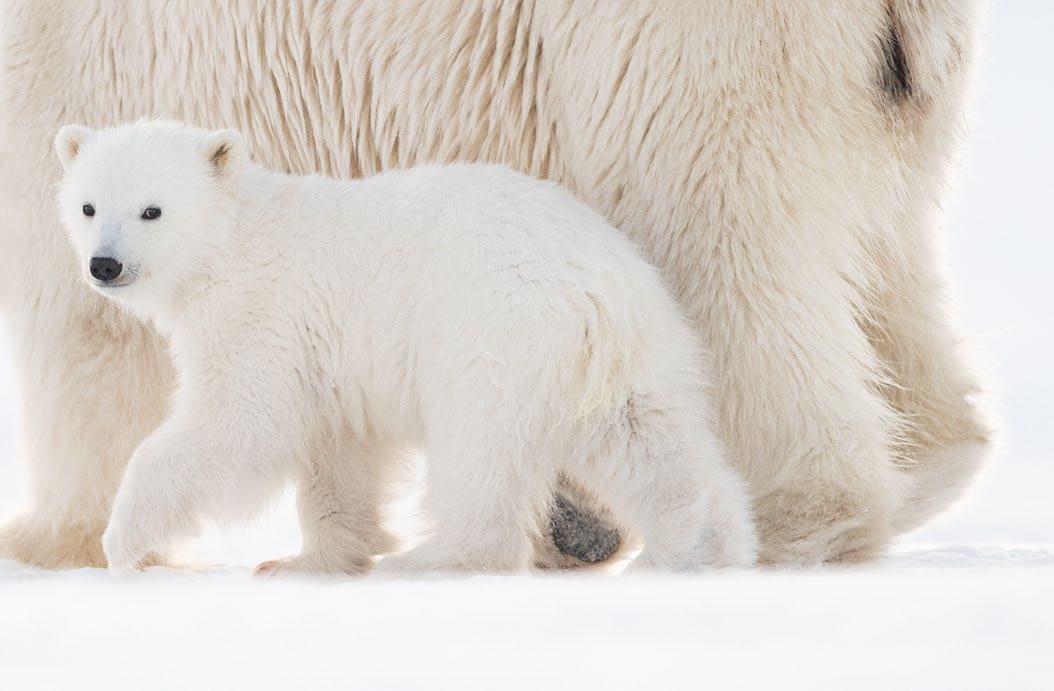






When males are looking for a mate, they become very aggressive toward other males and may even kill the female’s cub to make her available for mating again. Spring, which runs from March to May, is the mating season, after which the pairs will separate again. Pregnant females will seek out an area to build a winter den, the place where their cubs—most commonly twins—will be born two months later. In the approximately eight months they will spend in the den, the mother will not eat or drink, but will only take care of the cubs, feeding them with a very high-fat milk (31% fat) and surviving on the fat reserves she has built up over the previous summer. In spring, around late March/early April, they will emerge from the den when the cubs are strong enough to survive the Arctic conditions outside.


Also called Parasitic Jaeger in North America, the Arctic Skua (Stercorarius parasiticus), owes its name to its feeding strategy. This migratory species steals food from other species, by chasing them in the air until they surrender their food. A behavior known in nature as kleptoparasitism, where one animal deliberately steals food from another: a true pirate of the bird world. Arctic Skuas will also eat eggs and chicks as well as feed off dead mammals. The species arrives in early June and leaves the archipelago in August/September. During the breeding season, they are very aggressive toward intruders that stray into their breeding territory.






Walruses (Odobenus rosmarus) are huge creatures, an adult male can weigh up to 1,800 kilograms! They are extremely social animals and spend much of the time on sea ice and in coastal areas in large groups, especially during the breeding season. They are easily recognizable due to their long, robust tusks, which are used for fighting and for hauling themselves out of the water onto ice floes.
Walruses have poor eyesight, but their whiskers play an important role in hunting. The dense cluster of stiff, very sensitive whiskers helps them find their principal prey invertebrates like clams and mussels on the dark seafloor.


Unlike most predatory mammals, Arctic Foxes (Alopex lagopus) hunt both by day and night. Their slit-shaped pupils can close more tightly than round ones to block out excess light during the day, and they can open more widely to let in more light at night. This gives foxes, like cats, better visual sensitivity over a wider range of light intensities than have mammals such as dogs and humans with their round pupils.



Silvana Editoriale S.p.A. via dei Lavoratori, 78
20092 Cinisello Balsamo, Milano tel. 02 453 951 01 www.silvanaeditoriale.it
Reproductions, printing and binding in Italy
Printed by Galli Thierry Stampa S.r.l., Milano in September 2025
